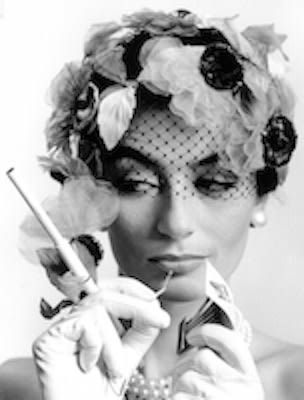BIOGRAPHY OF WILLIAM KLEIN
Photographer, painter, filmmaker and graphic artist, William Klein is one of the most influential artists of the 20th century.
Born in New York on 19 April 1926 to a Hungarian family, Klein grew up in Manhattan and studied sociology at the City College of New York. After graduating he did his military service in the American army: a year of occupation in Germany and a year at the Sorbonne.
In 1946, demobilised in Paris, Klein devoted himself to painting. After a brief period in André Lhote's studio, he studied for a longer period with Fernand Léger. That same year, he fell in love with and married Jeanne Florin. They lived and worked together for more than fifty years. Their son Pierre Klein was born in 1963.
Klein’s first exhibitions were in Belgium in 1951, then in Italy. In Italy he went to Milan and collaborated with the Italian architect Angelo Mangiarotti to create geometric Hard Edge murals. He also tried his hand at various photographic experiments and abstract creations; these were exhibited and published on the cover of the magazine Domus (1952-1961) and used for record sleeves.
In 1954, he met Alexander Liberman at the Salon des Réalités Nouvelles. Lieberman, the artistic director of Vogue, proposed a collaboration that would last more than 10 years.
Klein took original and innovative photographs and imposed himself as a true director. He shot with both wide angle and tele-photo lenses, and inspired by his past pictorial experiences took the models out of the studio and onto the street.
At the same time, he created a photographic diary of his return to New York. He ignored taboos, used a wide-angle lens, grain, violent contrasts, accidents, and unusual framing. The result of all this was his first book “Life is Good and Good For You in New York”, a work of unparalleled dynamism and intensity. With the support of Chris Marker, it was published in Paris, London and Rome in 1956, and won the Nadar Prize the following year.
On the back of this success, he produced a series of books devoted to other major cities: Rome in 1959, Moscow and Tokyo in 1964, and much later Paris in 2002, which in turn became best-sellers in the world of photography.
In 1956 he met the cinema: Federico Fellini heard about his book and and asked him to come to Rome to assist him on “The Nights of Cabiria”. In 1958, he made his first short film “Broadway by Light” which was probably the first pop film. Two years later he was commissioned to design the visuals for Louis Malle's film “Zazie dans le métro”. In 1962, he shot a series of documentaries for the French television programme “5 Colonnes à la Une". This was followed by a feature-length TV film "Aux Grands Magasins" with Simone Signoret. There followed by some twenty documentaries, feature films and dramas which included :
Muhammad Ali The Greatest (1964-1974)
The Little Richard Story (1980)
Big nights and little mornings (1968-1978)
Mister Freedom (1968),
The Control Couple (1977)
The French (1981)
The Messiah (1999)
Although his 1966 film “Who Are You Polly Maggoo?” did not have an immediate impact it nevertheless became a cult work, in which the artist presents a modern and delirious satire of the world of fashion, the media and television. It won the Jean Vigo Prize in 1967.
A multidisciplinary and prolific artist, Klein also innovated by directing more than 250 advertising films that marked their time, including for Citroen, Dim, Saupiquet, Renault, Ricqles, Michoko... and won a Victoire de la Musique award in 1985 for the cover of Serge Gainsbourg's album, Love on the Beat.
In 1986, Klein created the series “Contacts on La Sept” (Arte), a series of thirteen-minute films in which photographers were invited to talk about their work through the prism of their contact sheets.
It was in the 1980s that Klein returned to photography and pushed the boundaries of experimentation to the point of producing what he called ‘painted contacts’, a remarkable synthesis between his work as a photographer, painter, graphic artist and filmmaker. The result is a plastic language of his own, which highlights his working method and the protean and resolutely graphic dimension of his work. At the end of the 1980s, he published Close Up (1989), and other books followed: “Mode In and Out” (1994), “New York” reissued in a new layout (1995), “Films” (1998), “Contacts” (2008), “Rome + Klein” (2009), etc.
In 2012, his early abstract and painting works are featured in the book “Paintings etc.” followed by the publication “Black and Light” in 2015.
In parallel, Klein is exhibiting all over the world. In December 2005, the Centre Pompidou opened a major retrospective of his work and co-published a 400-page book “Retrospective”. In 2012, the Tate Gallery in London devoted an exhibition to William Klein + Daido Moriyama.
In 2018, the 21-21 Design Sight in Tokyo gave him an exhibition titled “To The Rhythm Of New Technologies”. This was followed by “Manifesto” in Madrid and Barcelona.
In recent weeks, he was still working on the release of a ‘film-novel’ based on his iconic film “Who are you Polly Maggoo?” and was working on future exhibitions in China and Korea.
Klein passed away just as a retrospective exhibition of his work at the ICP in New York came to an end. It was a huge success, and its book will be published soon.
William Klein's creative, experimental and visionary work has significantly impacted the history of photography and influenced generations of photographers, cinematographers, filmmakers and graphic artists.
